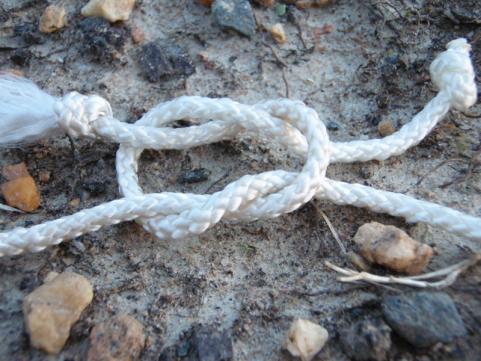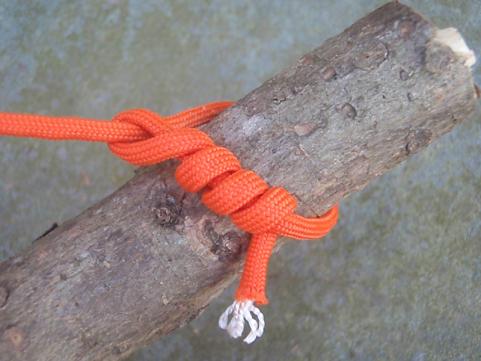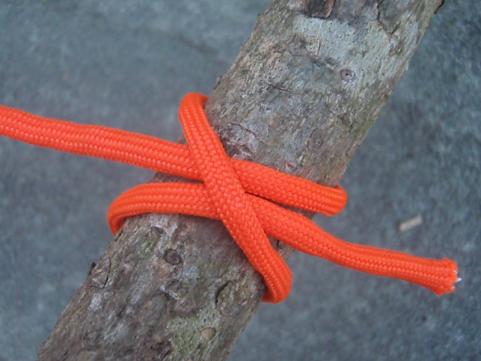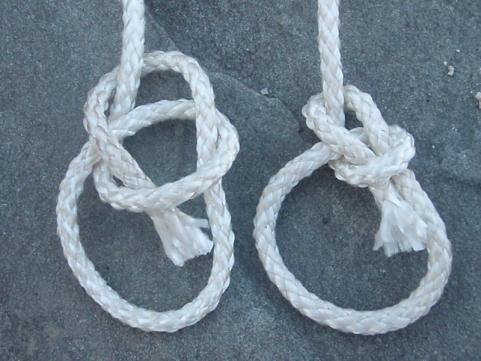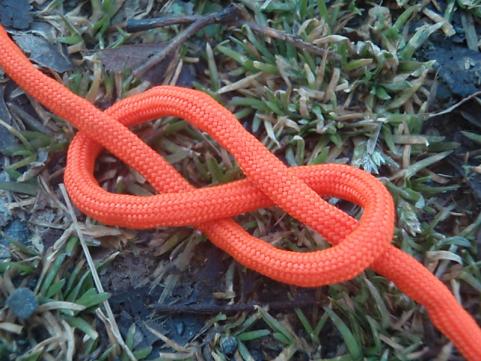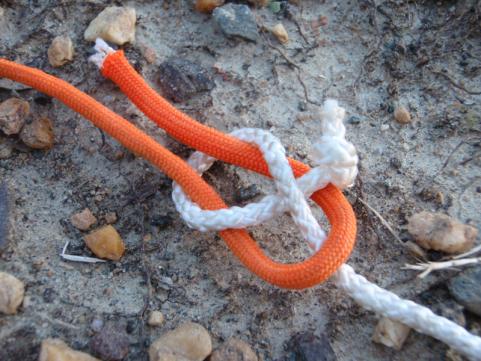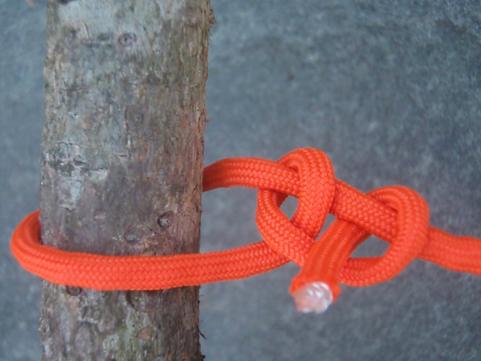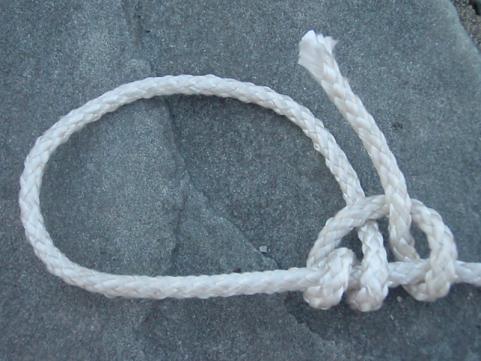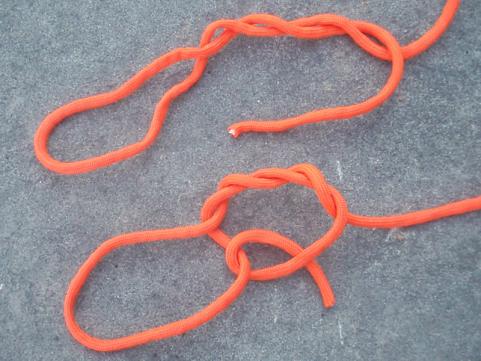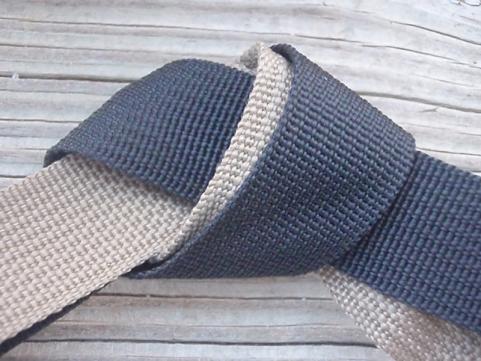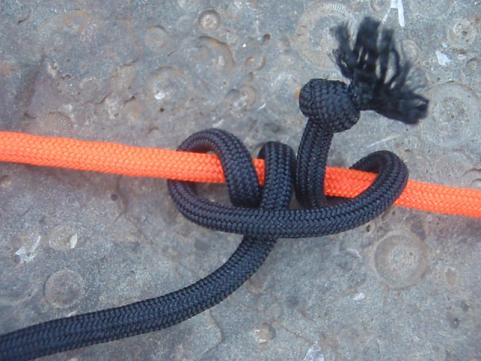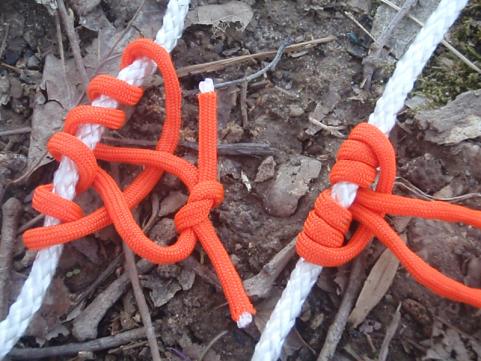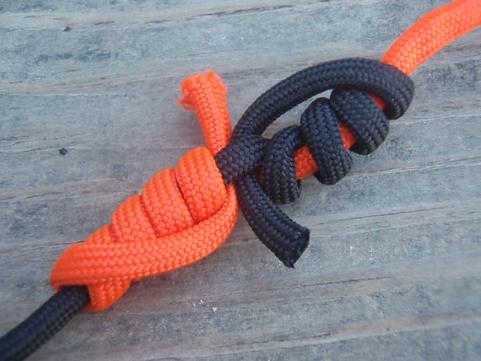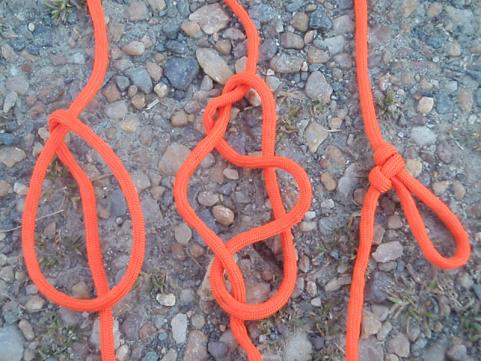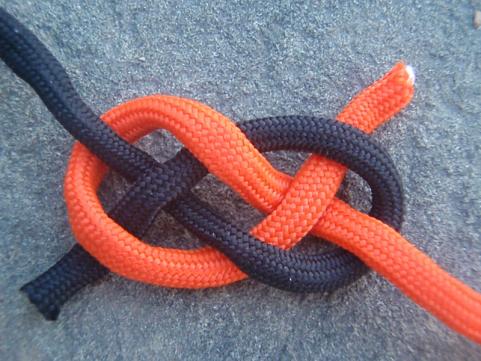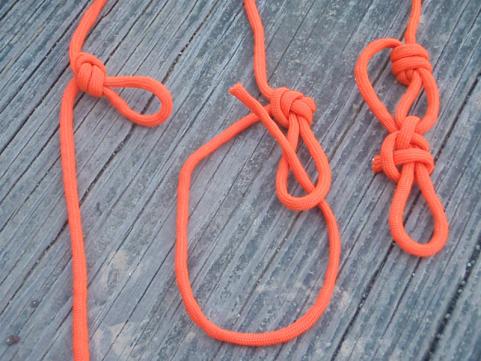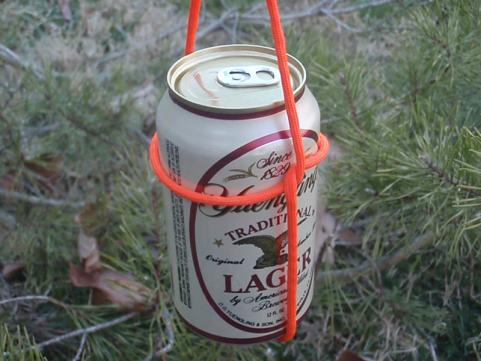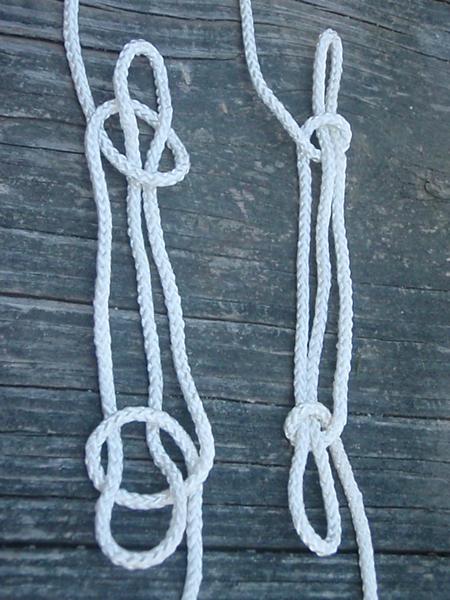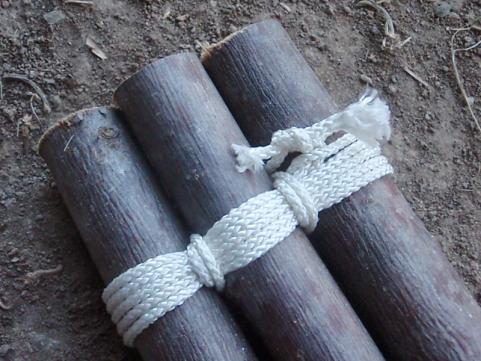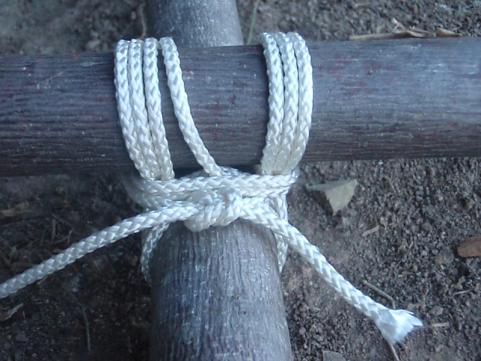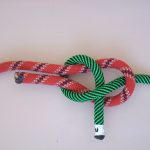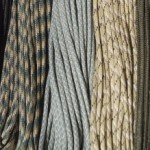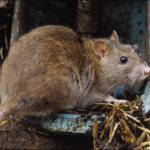How to Tie 20 Essential Knots
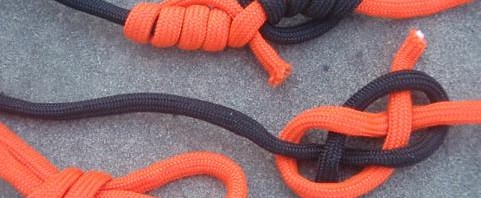
Photo: Outdoor life
Source Outdoor life By Tim MacWelch
converted from photo carousel for easier reading.
You can see other great survival and prepping articles on their site OUTDOOR LIFE
The Square Knot is a classic for connecting lines and tying knots. Whether you are tying two ropes together to make a longer rope, or you are tying up a bundle of firewood to carry, the Square Knot is a winner. It’s much more secure and stable than its cousin the Granny Knot.
How to Tie: You can tie a solid square knot by lapping right over left, and then tying again in the reverse direction – left over right.
The Timber Hitch secures a rope to a cylindrical object for hauling or as a support.
How to Tie: all you need to so is run the free end of the rope around the log you intend to pull. Then wrap the free end of the rope around the standing end of the rope. Wrap the free end around itself three or four times. Finally, you will tighten the Timber Hitch so the three wraps are tight against the log.
The Clove Hitch is an easy knot to tie, and it secures a line to a tree or post quickly, but it does slip when used alone, without any other knots as a backup.
How to Tie: To create a Clove Hitch on a tree, make a loop of rope around the tree. Then make another loop and pass the free end of the rope under the second loop before tightening. To tie this one over a post or stake, just create a loop in the free end of the rope and slide it over the post. Then make another loop the same as the first. Put the second loop over the post (just above the first loop) and tighten the hitch.
The Bowline creates a loop at the end of a rope that cannot shrink or expand. This knot is often taught with the story of the rabbit coming out of the hole, in front of the tree, going behind the tree, and back down his original hole.
How to Tie: To explain this in English, you form a loop on top of the long end of the line. Pass the free end of the line through the loop and around behind the line. Bring the free end down in the original loop, while maintaining the secondary loop which becomes your Bowline loop. Once the “rabbit” is back down his hole, pull the “tree” up and the Bowline is tightened.
The Figure 8 makes a stopper knot at the end of a line, and it’s necessary to use this knot in order to tie several other more complex knots.
How to Tie: To tie a Figure 8, also known as a Flemish Knot, you simply pass the free end of a line over itself to form a loop. Continue under and around the line’s end, and finish the knot by passing the free end down through the loop.
This one is a little weird, but nothing works better for tying different types of material together and joining different thicknesses of rope. This knot even joins together lines or materials that normally couldn’t be joined together.
How to Tie: With the sheet bend, you bend the thicker or more slippery rope into a “j” shape (like a fish hook). You then pass the other rope through the fish hook from behind, wrap around the entire fishhook once and then tuck the smaller line under itself.
Two Half Hitches secures a line to trees or poles, (or to itself in the case of the Trucker’s Hitch).
How to Tie: This knot is pretty easy, and I use it often to tie tarps up for shelters and even to hang up hammocks. Once you have wrapped around the standing end to make the first Half Hitch, then you’ll wrap around the line in the same direction again to make the second Half Hitch. Pull it tight and you are done with Two Half Hitches. If you feel like you want a little insurance, you can tie an Overhand knot in the free end of the line to keep the Two Half Hitches from slipping.
The Taut Line Hitch takes the place of a slide to tension or loosen a loop in a line (like a tent guy line). This knot grips well, as long as there is tension on the “taut” side of the loop.
How to Tie: To tie the Taut Line Hitch, create a loop by wrapping around something like a tree or tent stake. With the free end of the rope, wrap towards the stake twice. Then wrap the free end of the rope over everything, towards you one time around the rope and cinch these wraps down tight. Pull on the standing line and the Taut Line Hitch should grip the loaded line.
True to its name, the Fisherman’s Knot, is pretty much only good for using with fishing line.
How to Tie: Pass the free end of the line through or around the object to be secured, for example, through the eye of a fishhook. Then, wrap the free end of the line around the other side of the line about five or six times. Pass the free end of the line through the triangular opening next to the object being secured, and then pass the free end of the line through the large loop you just created by going through the small triangle. If you are tying this one with fishing line, spit on the line before tightening to lubricate it so that the friction does not cause heat damage to the line. Tighten the knot, trim off any extra line and enjoy your day fishing.
The Water Knot safely secures webbing, belts and straps together.
How to Tie: Start with a loose overhand knot in the end of one strap. Pass the other strap in the opposite direction, mirroring the route of the first overhand knot. Take the ends of two straps and pull the knot tight
The Rolling Hitch adds a leg to an existing line. This hitch is the basic knot behind a Taut Line Hitch, but it can be added to any existing line. The Rolling hitch was often used historically to hook more dogs to a dog sled main line.
How to Tie: Wrap the free end of one rope around the main rope to create a Half Hitch. Make a second Half Hitch and then wrap over the entire knot to finish with a final Half Hitch to the other side from your starting place.
The Prusik Knot creates a loop that can be used as an ascender or decender. This “slide and grip” knot can also be handy for adding a loop to a rope when neither end of the rope is free.
How to Tie: To tie a Prusik, you’ll need a short rope and a separate long rope. Tie a loop in the short rope that is secured with a solid knot like a Square Knot. Now, wrap the loop around the long rope three times, making certain that each wrap lies flat against the long rope. Pass the loop of short rope under itself and pull it tight. As long as there is weight on the loop, the Prusik will grip the long rope. You can also slide the Prusik up or down the long rope by taking the weight off the loop and pushing the wraps up or down the long rope.
This little gem of a knot is used on fishing line to secure two lines together (mends a broken line or attaches leaders and tippets).
How to Tie: You’ll start the Blood Knot by overlapping the two lines, and wrapping one free end around the other line five or six times. Pass the free end between the two lines. Wrap the other line the same number of times (five or six), and tuck the free end back between the two lines in the opposite direction of the other free end of the line. If using fishing line, spit on it to reduce friction damage.
This crafty knot puts a loop in a line when neither end of the line is free to tie a loop. This one is great for cheating in tug of war, if you can get a little slack to make the Man Harness.
How to Tie: So when you have a little slack on the line, make a loop so that part of the line runs through the middle of the loop. Grab the side of the loop and pull it through the gap between the line in the middle and the other side of the loop. Pull the new loop tight, and then pull the line to cinch the Man harness knot. This one can slip, if you don’t have some constant tension on the newly created loop.
The Trucker’s Hitch gives you a unique mechanical advantage for tightening up a line. While it is a little complex, it is worth the trouble to tighten lines before finally securing them. It’s great for tying down tarps and shifting loads.
How to Tie: Start off this knot by tying a Figure 8 knot with a loop of the line. Then pass the free end of the line around the object to be secured and pass the line through the loop. Next, pull the free end tight, and secure the free end with Two Half Hitches, just below the loop.
The Barrel Hitch has been used in sailing and construction work for centuries. It allows you to secure a bucket, barrel or other cylindrical object to lift it in a well-balanced position.
How to Tie: Place your barrel or other object to be lifted on top of your rope. Then tie an Overhand Knot across the top of the barrel. Open up the Overhand Knot until it wraps around the top sides of the barrel. Tie the ends of the rope together with a Square Knot and then then lift. This knot makes a fine bucket handle when the wire handle finally breaks off.
SAFETY WARNING: For safety and stability while hoisting barrels, the rope around the barrel needs to be high above the center of gravity on the barrel, but pose no danger of slipping off the top of the barrel. FYI, beer has an excellent center of gravity.
This knot seems half magic trick, half practical knot, but it shortens a line without cutting the line. This knot keeps our long ropes in one piece, despite our miscalculations in the field. I will use this one on Bear bags, when the line is too long, but I don’t want to cut it.
How to Tie: To tie a Sheepshank, fold the rope to the new length you need. Create a Half Hitch in one end of the continuing rope, and drop it over the nearby loop. Make a Half Hitch in the other standing end, drop it over its adjacent loop, and then tighten the whole thing slowly.
The Tripod Lashing is commonly used for shelters. It resembles the Square Lashing (next slide).
How to Tie: Start with your three poles to be joined together, lying on the ground side by side. Tie a Clove Hitch to one of the end poles, and then wrap around all of the poles five or six times. Now, wrap the line between the poles – twice between each one – working back towards the original Clove Hitch. Finish the lashing by tying the free end of the line to the free end from the Clove Hitch that started this whole thing. Spread the legs on the tripod and use it in your camp for something handy.
The Square Lashing has been used to build everything from camp chairs to towers and bridges – but you can also use it to secure two poles together.
How to Tie: tie a Clove Hitch to one of the poles, near the place where the two poles cross. Then wrap your line around the junction of the two poles, going under the lower pole and over the top pole. Spiral outward with these wraps five or six times. Next, wrap between the poles, biting onto the previous wrappings to tighten them. Finally, use a Square Knot to tie the free end of the rope to the free end from the Clove Hitch that started this whole lashing. Easy, right?
 This is an aggregated site. Please be aware some of the sites we link you to could have pop ups. We have no control over them. However, we will never link you to a site that requires you to make any purchase to view the blog.
This is an aggregated site. Please be aware some of the sites we link you to could have pop ups. We have no control over them. However, we will never link you to a site that requires you to make any purchase to view the blog.
Please read our disclaimer. We provide you with information from various sites all over the world. The author’s expressed opinion isn’t necessarily that of The Prepared Page or its staff. Our intent is to bring you the information. Use your common sense and your own best judgment when using any information contained within the blogs.
While you’re here check out some of those other posts you may find them interesting!!!
Some posts may contain affiliate links.

